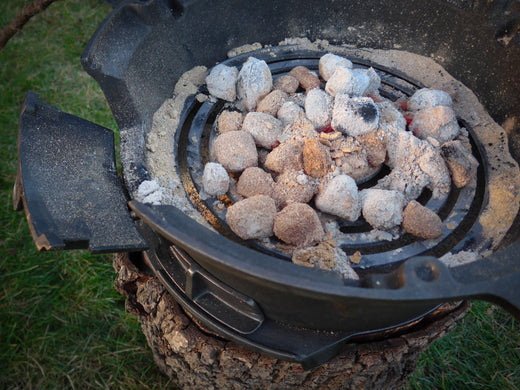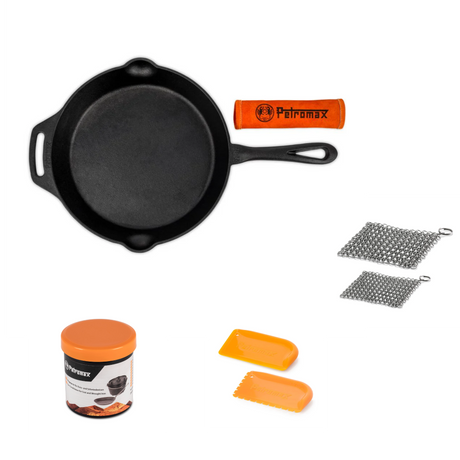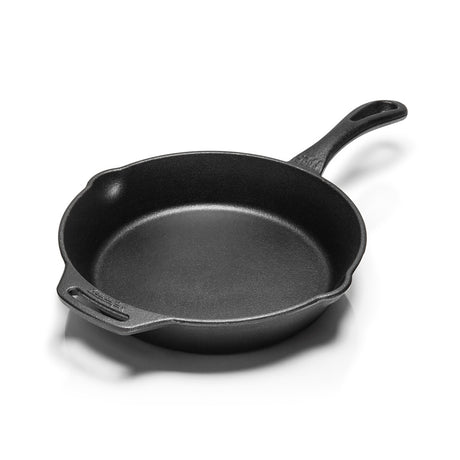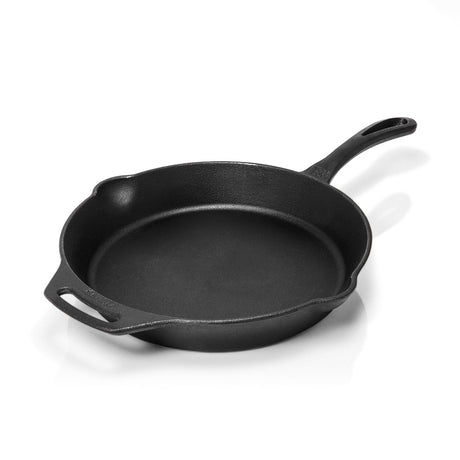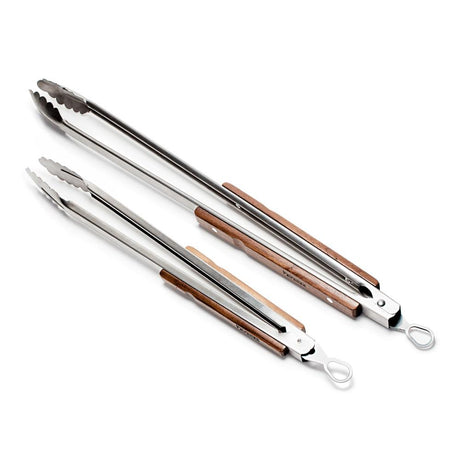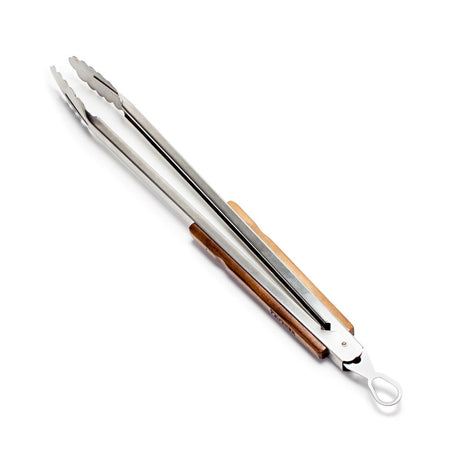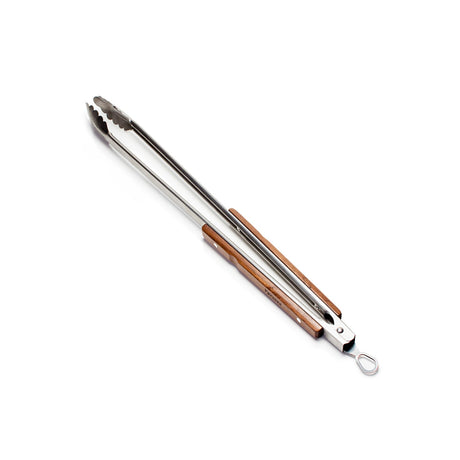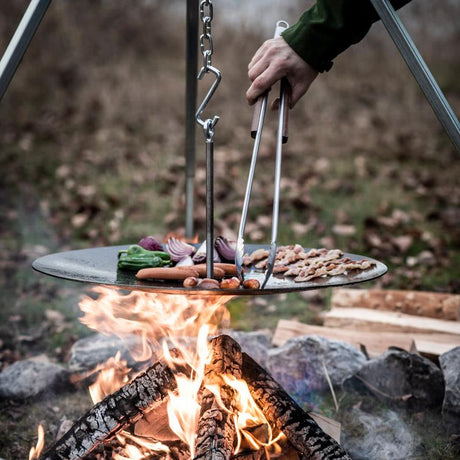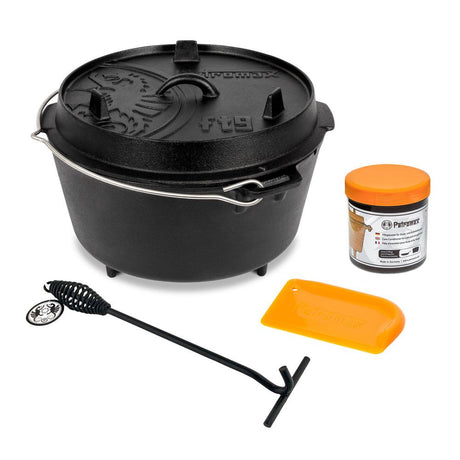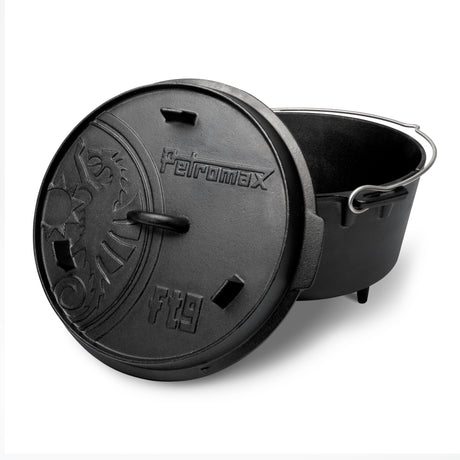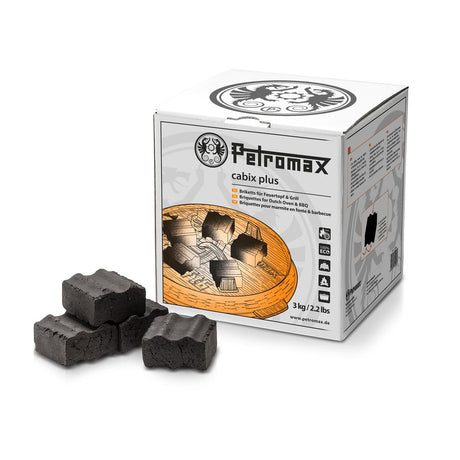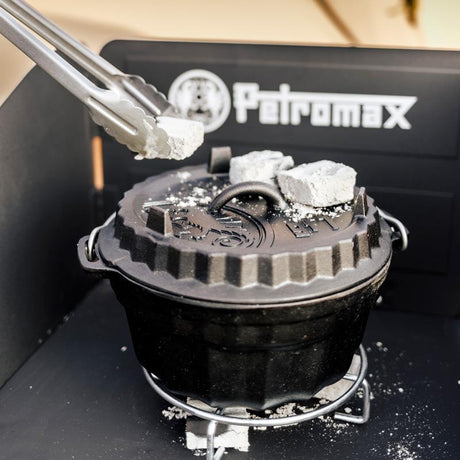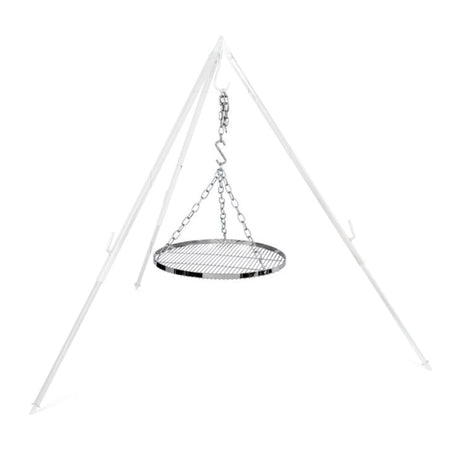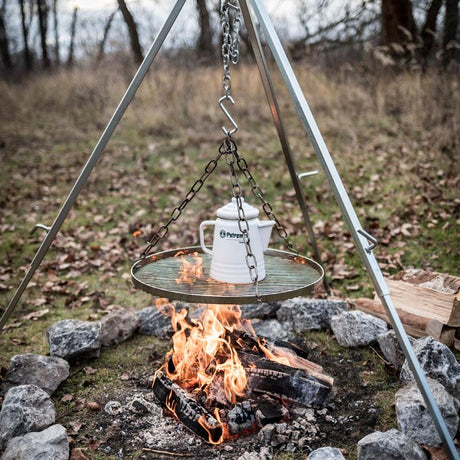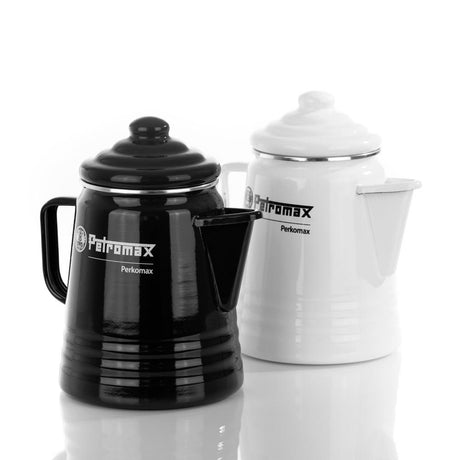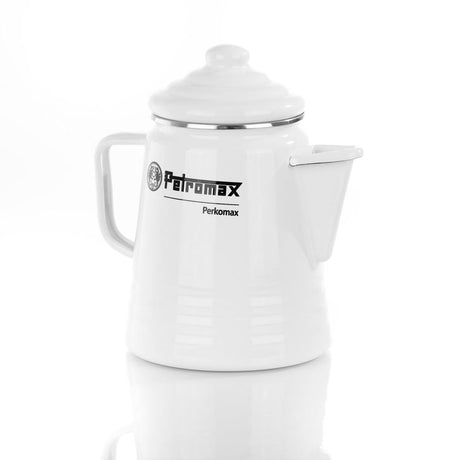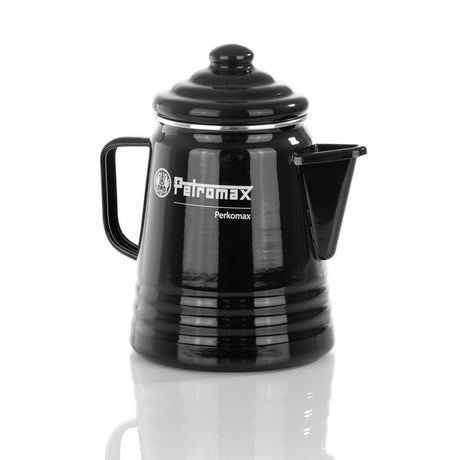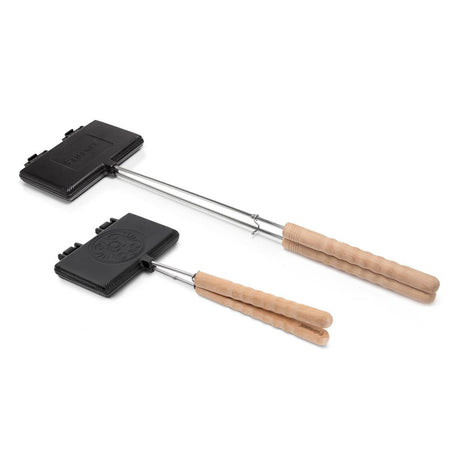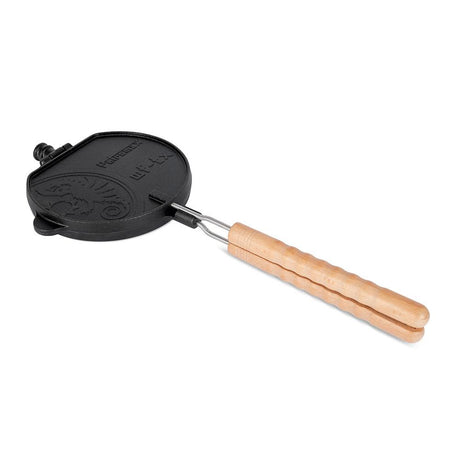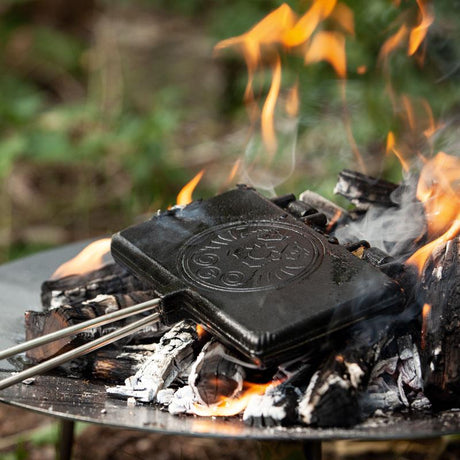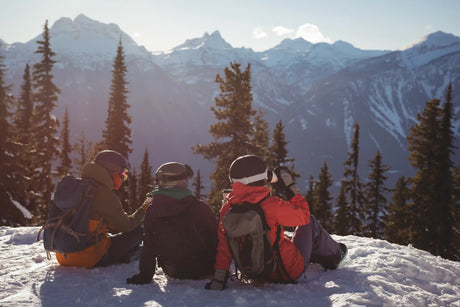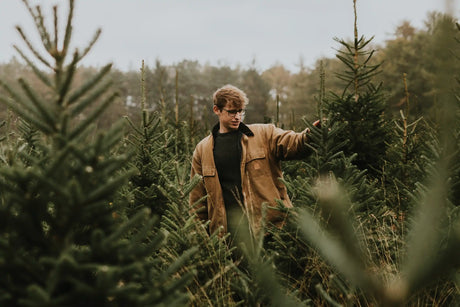
It's finally that time of year again: barbecue season is upon us! But before you can try your hand at steaks, sausages and vegetables, the first challenge awaits: lighting the barbecue. Don't worry, it's easy with the right technique and a few tricks!
In this step-by-step guide, you will learn how to light your barbecue safely and quickly, regardless of whether you prefer charcoal or briquettes. We'll also tell you which tools will make your work easier and how to ensure optimum embers and perfect barbecue results.
Table of contents
The choice of charcoal: charcoal or barbecue briquettes?
Lighting the barbecue with a chimney starter
Lighting the barbecue without a barbecue lighter
Further tips on lighting the barbecue
Barbecuing made easy: a short guide
The choice of charcoal: charcoal or barbecue briquettes?
Before you light the embers and bring the barbecue to life, you have an important decision to make: Charcoal or barbecue briquettes? Both have their own characteristics that need to be considered.
Lump charcoal is the turbo among fuels. It catches fire at lightning speed and brings the barbecue up to temperature quickly. However, it also burns just as quickly, which means that you may need to add fuel more often, especially when the barbecue is in full swing. For spontaneous barbecues or if you just want to throw something on the grill for a short time, lump charcoal can be just the thing.
On the other hand, we have the trusty barbecue briquettes. They need a little more time to heat up properly, but once they have reached their optimum temperature, they provide even and long-lasting heat. Perfect for extended barbecues where you want to make sure the embers don't let you down, especially if you're expecting a horde of hungry guests.
Ultimately, the choice of fuel depends on your individual needs and the barbecue activities you have planned. It may be worth trying out both options to find out which suits you and your barbecue style better. Because at the end of the day, the most important thing is that you enjoy your barbecue time to the full.

Lighting the barbecue with a chimney starter
Barbecuing without the stress of long waits? It's child's play with a chimney starter! Experts swear by it - it's still the easiest and quickest way to get your barbecue going. Here's how to do it:
- Fill the chimney starter to the brim with charcoal. Make sure to observe the maximum filling quantity if the chimney has a marking! Then place the chimney starter on a fireproof surface - this can be a concrete slab or your barbecue itself.
- Light the charcoal in the chimney starter. There are two methods: the classic method is to place a suitable barbecue lighter under the chimney starter so that the flames are drawn through the charcoal from below. This creates a cool chimney effect so that the heat rises quickly and makes the charcoal glow quickly. Alternatively, you can also place the barbecue lighter in the top quarter of the charcoal, so that the chimney starter burns from top to bottom. This may take a little longer, but it reduces the amount of smoke and therefore the emissions.
- Now you have to wait until the barbecue lighter has burnt down and the charcoal has glowed through. Depending on the environmental conditions (temperature, wind, etc.), this will take around 10 to 15 minutes. If you don't want to wait that long, grab the Quick Glow Quick Booster - it gets the charcoal ready to grill in the chimney starter in just 8 minutes! You can find the Quick Booster in the product stream below, if it's not already sold out.
- As soon as the charcoal is glowing nicely, pour it from the chimney starter into the barbecue - and voilà, the perfect embers are ready!
Remember to wear barbecue gloves when transferring the coals - not all chimney starters have perfectly insulated handles. Be careful when emptying the chimney starter into the fire grate of the barbecue to avoid flying sparks. And don't forget to pay attention to the quality of the chimney starter - cheap models can be susceptible to rust.
Good to know: A constant and steady supply of air is important. The so-called operating temperature is reached when the coals or briquettes are all glowing but not burning. Rule of thumb: If it's white, it's glowing. With a little experience or luck, the embers will have worked their way from the inner source of the fire to the outside after just ten minutes.
Lighting the barbecue without a barbecue lighter
How do I light my barbecue if I don't have a barbecue lighter to hand? No problem! There are lots of tricks for lighting the fire without having to resort to special aids. Forget the boring standard method - here are a few creative ideas:
- Egg carton with wax drops: grab an old egg carton and fill it with sawdust or scraps of paper. Then add a few drops of wax and leave to cool. As soon as it is solid, place the carton under the charcoal and light it. Voilà, your homemade barbecue lighter!
- Dry pine cones with wax: Gather a few dry pine cones and dip them in melted wax or soak them thoroughly with it. Once they have dried, place them under the charcoal and light them. These little things are real fire starters!
- Newspaper wrapped around a bottle: Grab a newspaper, roll it into strips and wrap them around a bottle. Then place the wrapped bottle on the grill grate, cover it with charcoal and carefully pull the bottle out. Now all you have to do is light the paper and you're ready to go!

More tips for lighting the barbecue
- The perfect spot: Find a solid, flat surface for the barbecue. Nobody wants the thing to tip over while sizzling and the steak to end up on the floor.
- Look around you: Check the surroundings! No flammable stuff nearby, please. No newspapers, dry wood or grass - otherwise the barbecue could quickly turn into an unwanted bonfire. Also, keep the kids and the dance floor at a distance, we don't want any heat waves outside the barbecue.
- Safety First: Fire blanket, sand or fire extinguisher - always have them handy. Water is great for quenching thirst, but not necessarily for putting out barbecue fires. And don't forget your apron and gloves, because hot splashes of fat are not exactly what you want.
- Less is more: When lighting the barbecue, the motto is "less is more". Too much kindling could turn your barbecue into a fireworks show. Liquid barbecue lighters such as kerosene or turpentine? Please don't. It's like an invitation to the fire spirits. And spirits? No thanks, we want bratwurst, not flamethrowers.
- Charcoal know-how: Charcoal or barbecue briquettes - that's the question here. Both must be dry, otherwise it won't work. And think about the environment! Make sure your charcoal has been produced sustainably. Barbecue briquettes burn longer and more evenly, but charcoal also gives the whole thing a quick kick-start.
Barbecuing made easy: a short guide
Step 1: Pile up the charcoal
To get started, pour about half of the charcoal you need into the grill tray and form a nice pyramid. If you are unsure how much charcoal you need, start with a small amount. You can always add more as soon as the first portion has glowed through.
Step 2: Place the barbecue lighter
Place the barbecue lighter on or between the pieces of charcoal according to the manufacturer's instructions. You can find an overview of different barbecue lighters below.
Step 3: Light the charcoal
Light the lighter or charcoal with a long match or a lighter. Charcoal glows faster than briquettes, so you can light it about 20 to 30 minutes before you plan to grill. Allow a little more time for briquettes.
Step 4: Provide an air supply
Fire needs air! Use a piece of cardboard, a hairdryer or bellows to fan the charcoal so that it glows better.
Step 5: Refill the charcoal
After about 20 minutes, the charcoal should be glowing through and show a white layer of ash. Now add the rest of the charcoal and let everything glow through again. As soon as the charcoal is almost completely covered with ash, you can start grilling.
